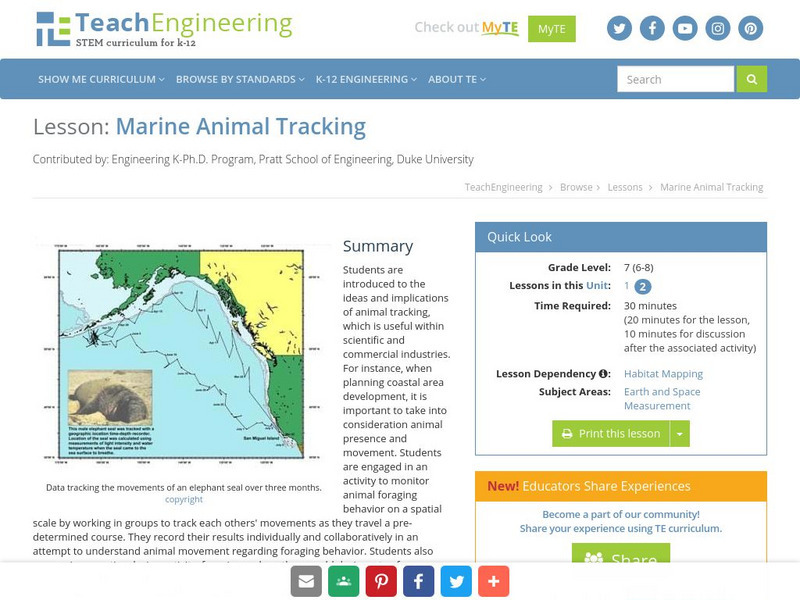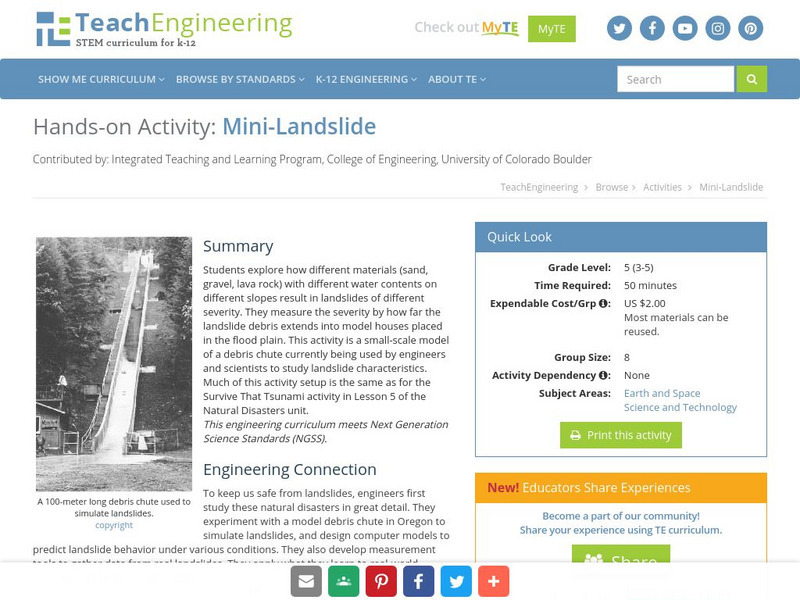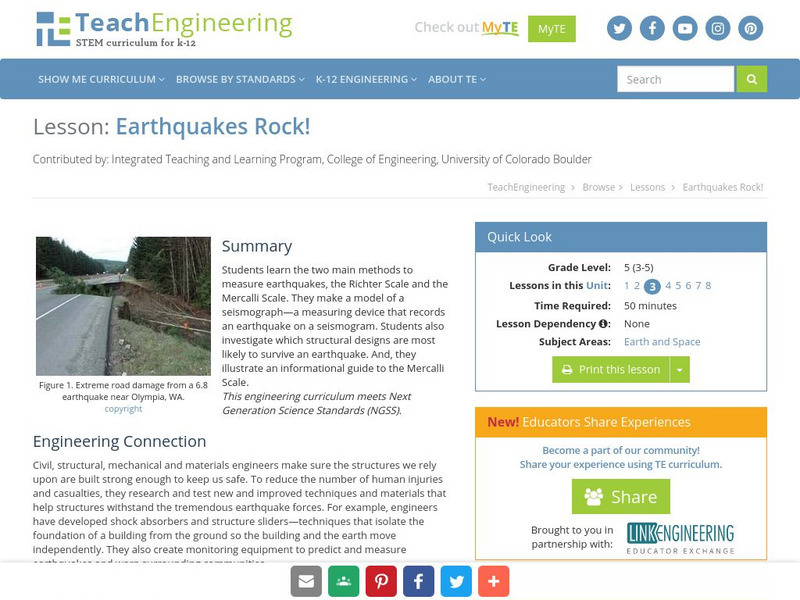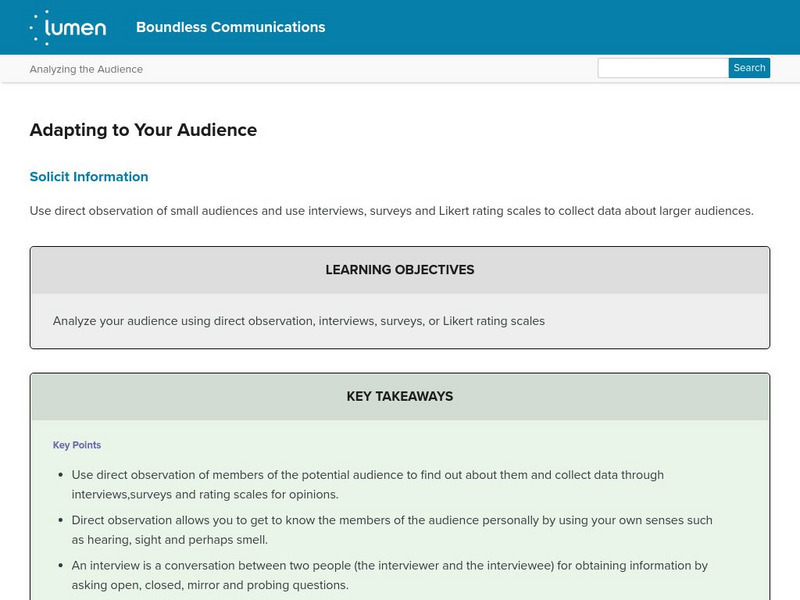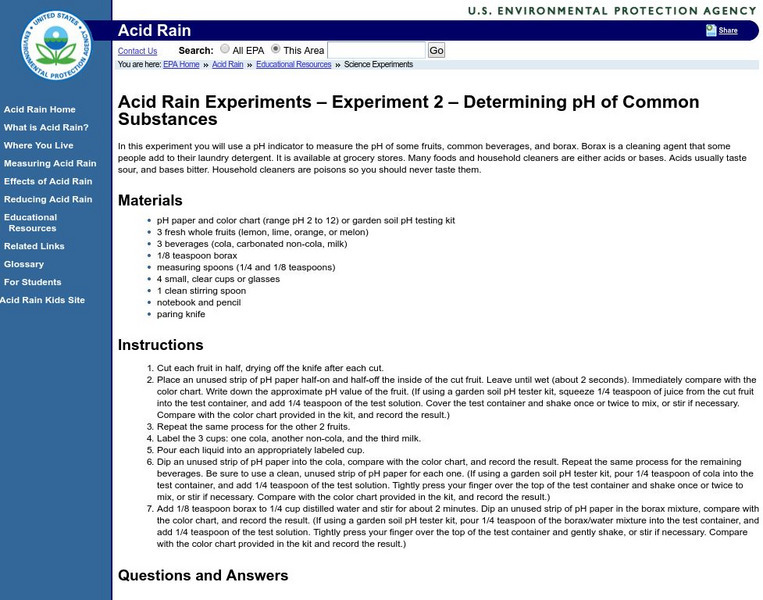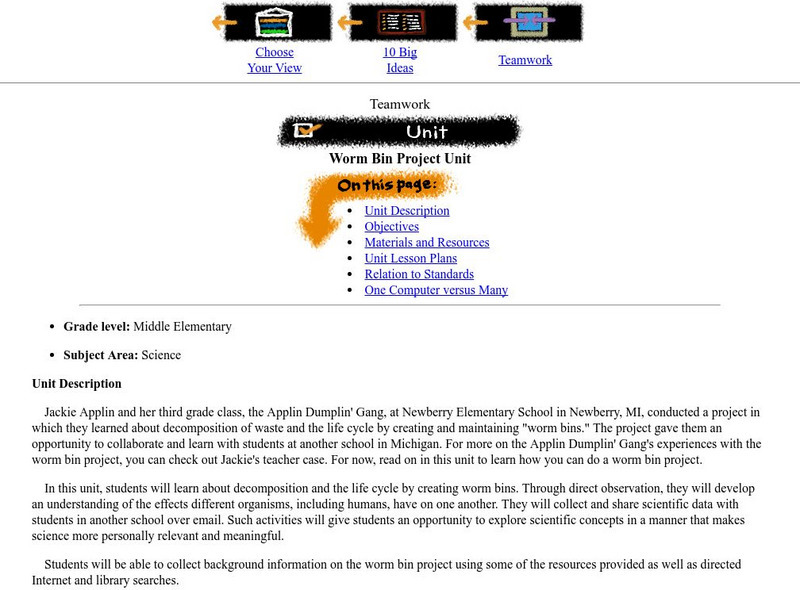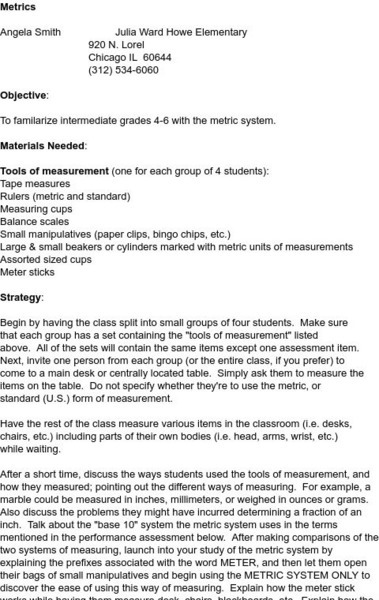OER Commons
Oer Commons: Scale
Seventh graders will explore scale and use it to find measurements in scale drawings.
National Geographic
National Geographic: Properties of Matter: Macro to Nano Scale
In this lesson, students learn how properties of matter for common materials may change when examined at the nanoscale level. Includes student handouts, video resources, and a glossary.
Other
Uw: Econ Research Lesson on Diminishing Returns & Increasing Marginal Cost
This site offers a lesson plan designed to teach the concept of "marginal productivity" by having students produce "textbooks" in a simulated factory. Directions, charts, and questions are provided.
TryEngineering
Try Engineering: Spring Scale Engineering
Students learn about the engineering design process as they design, build, and test a spring scale using everyday items that can measure the weight of an apple. The objective of the activity is to explore how scales work and to learn...
Better Lesson
Better Lesson: Customarily Speaking and Measuring
Students will be using a hands-on approach to learning about length, capacity, and weight. This lesson contains a detailed plan, slides containing notes and problems, and a video tutorial.
The Wonder of Science
The Wonder of Science: Ms Ess2 2: Geoscience Processes at Varying Scales
Assessment templates, videos, examples, lesson plans, and photos of student work that directly address standard MS-ESS2-2: geoscience processes at varying scales.
Palomar Community College District
Palomar College: Lesson 1: Production Costs
This lesson provides a good outline for a unit on the study of "production costs". Charts and graphs are provided to help understand a firm's cost curves, and at what level of production they should produce.
BioEd Online
Bio Ed Online: The Science of Microbes: Comparing Sizes of Microorganisms
Middle schoolers create models of microbes to scale, and compare their sizes and shapes. A 'Microbe Scaling Chart' is provided. The lesson and a set of PowerPoint slides can be downloaded. An accompanying instructional video is 6 min. 39...
TeachEngineering
Teach Engineering: Marine Animal Tracking
This lesson engages students in an activity to monitor animal foraging behavior on a spatial scale. The students will break into groups and track each other's movements as they move through a pre-determined course. The results will be...
TeachEngineering
Teach Engineering: Mini Landslide
Students explore how different materials (sand, gravel, lava rock) with different water contents on different slopes result in landslides of different severity. They measure the severity by how far the landslide debris extends into model...
TeachEngineering
Teach Engineering: Earthquakes Rock!
Students learn the two main methods to measure earthquakes, the Richter Scale and the Mercalli Scale. They make a model of a seismograph - a measuring device that records an earthquake on a seismogram. Students also investigate which...
CK-12 Foundation
Ck 12: Geometry: Dilation
[Free Registration/Login may be required to access all resource tools.] In this lesson students explore geometric dilations. Students examine guided notes, review guided practice, watch instructional videos and attempt practice problems.
University of California
Ucmp: Sequencing Time
Lesson plan in which students place events in sequence, comparing their life to the history of the Earth.
Illustrative Mathematics
Illustrative Mathematics: 7.g Floor Plan
This lesson plan has students solving word problems using scale drawings.
Lumen Learning
Lumen: Boundless Communications: Adapting to Your Audience
This lesson focuses on adapting your speech to your audience including analyzing your audience using direct observation, interviews, surveys, or Likert rating scales and then apply knowledge about the audience to adjust the message...
US Environmental Protection Agency
Epa: Determining the P H of Common Substances
In this acid rain experiment the students will be "determining the pH of common substances." This is a great lesson plan for an experiment.
Michigan State University
Michigan State University: Lets Net: Worm Bin Project Unit
Students learn about the worm life cycle and decomposition of life by creating small-scale worm ecosystems. Research groups share scientific data with groups at other schools using web-based communication tools.
Science and Mathematics Initiative for Learning Enhancement (SMILE)
Smile: Metric System
This lesson plan familiarizes students in grades 4-6 with using the metric system and performing conversions.
TED Talks
Ted: Ted Ed: How Do Geckos Defy Gravity?
Geckos aren't covered in adhesives or hooks or suction cups, and yet they can effortlessly scale vertical walls and hang from ceilings. What's going on? Eleanor Nelsen explains how geckos' phenomenal feet allow them to defy gravity. [4:30]
TED Talks
Ted: Ted Ed: Climate Change: Earth's Giant Game of Tetris
There's a game of Tetris happening on a global scale: The playing space is planet Earth, and all those pesky, stacking blocks represent carbon dioxide- a greenhouse gas that is piling up ever more rapidly as we burn the fossil fuels that...
TED Talks
Ted: Ted Ed: Is There a Limit to Technological Progress?
Many generations have felt they've reached the pinnacle of technological advancement. Yet, if you look back 100 years, the technologies we take for granted today would seem like impossible magic. So- will there be a point where we reach...
Incorporated Research Institutions for Seismology
Iris: Earthquake Magnitude Modeling With Pasta Quake
Using only strands of spaghetti, you and your class can explore the amount of energy released for each level of the earthquake magnitude scale.
Utah STEM Foundation
Utah Stem Action Center: Changes in Matter
The goal of this activity is to develop and use a model to describe that matter is made of particles on a scale that is too small to be seen. You will be making observations of changes supported by a particle model of matter.
Nature Conservancy
The Nature Conservancy: Reforestation: Impact on Climate
Deforestation is clearing Earth's forests on a massive scale. In this lesson, students learn the value of large-scale forest landscapes and their role in the carbon cycle.




